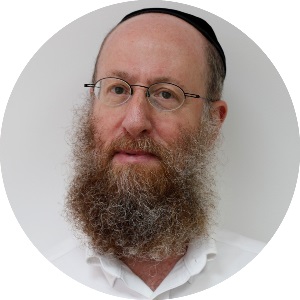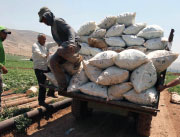Israel’s Jewish Population Explosion


FORWARD MOMENTUM “This group [chareidim] has its own independent educational system which is the key for its intergenerational survival within a very materialistic outer world” says Dov Friedlander professor emeritus at the Hebrew University’s Department of Population Studies (Photos: FLASH90)
I srael’s Jewish Population Explosion
Chareidi National-Religious Contribution Cited in Research
Twice every year like clockwork Israel’s Central Bureau of Statistics (CBS) releases a census — before Yom Hatzma’ut Israel’s Independence Day and again just before the end of the calendar year.
The headline number is always the country’s total population. With 8.7 million people — among them almost 6.5 million Jews — the State of Israel’s Jewish population today has grown tenfold since 1948. Some 43% of the world’s Jewish population now lives in Israel. And while that figure is most significant other numbers that receive less publicity bear watching just as closely.
For example in 1955 the first year in which the CBS released statistics on anticipated births Arab women could be expected to bear an average of eight children and Jewish women 3.6. Some 60 years later those numbers are almost equal — 3.3 Arab births to 3.1 Jewish births. And that’s despite the average marriage age of Jewish women rising from about 23 in 1955 to over 26 today and the number of marriages per 1 000 people dropping from almost 11 in 1948 to just over six today.
So much for the doomsday demographers a term coined to describe the false prophets including Roberto Bacchi (a demographer in pre-state Israel who predicted Israel’s Jewish population in the 21st Century would number between 580 000 to 1.6 million) and Hebrew University’s Sergio DellaPergola. The fear that Arabs may one day outnumber Jews between the Jordan River and Mediterranean Sea — oft-cited by the political left to justify the need for separate states for Jews and Arabs — isn’t borne out by the numbers.

Arab-Israeli birth rates have declined in a postagricultural society where children are no longer needed to work on farms
Even if you accept figures from the Palestinian Central Bureau of Statistics for the Palestinian Authority and Gaza at face value Jews still hold a 52%–48% population edge. However independent demographic research conducted by Bennett Zimmerman a former strategy consultant with management consulting firm Bain & Company as well as Yoram Ettinger a consultant to members of Congress and Israel’s cabinet contends that the Palestinians inflate their count by more than one million. Abu Mazen and company skew the numbers by including more than 400 000 Palestinians who live overseas and counting over 300 000 Jerusalem Arabs who hold Israeli ID cards. Further Zimmerman and Ettinger cite a World Bank survey alleging that the PA overstates births by 32%.
Therefore says Ettinger “there is no Arab demographic time bomb but a 66% robust Jewish majority trending upward benefitting from net-positive migration and an unprecedented tailwind of fertility.”
What factors led to that tailwind?
Dov Friedlander a professor emeritus at the Hebrew University’s Department of Population Studies offered a few novel theories in a country paper he presented at a March 2002 United Nations Population Conference.
The Arab economy in Israel both before and shortly after formation of the state was primarily a feudal-agrarian system. Political and economic power was vested in the hands of the “hamule ” or groups of extended families. On a farm the more hands the merrier and farming is one profession in which children can contribute at an early age.
After the Six Day War agriculture began to modernize and Israel started to industrialize. Farming became a less desirable profession — and so having many children to sustain a farm became unnecessary.
In fact in the latest CBS survey agriculture accounts for just 3% of Israel’s exports compared to 48% in 1950.
Professor Friedlander also contends that greater interaction between Arabs and the Jewish sector after 1967 introduced new and more expensive consumer goods which wouldn’t necessarily be within reach with a larger family. Similarly the law of compulsory elementary education passed in the 1950s meant a host of new expenses for Arab families all of which were less affordable when a family had so many more mouths to feed.
There were also offsetting factors that could have led to a higher birth rate including better access to health care transfer payments for child allowances and a sharply lower infant mortality rate. Friedlander admits “a precise analysis relating childbearing behavior under changed socioeconomic conditions is complex. However we suggest that the net effect of all these changes was conducive to the beginning of the onset of fertility decline.”
By contrast the Jewish birth rate has been boosted by chareidim the national-religious and to some extent even traditional and secular right-wing Jews.
Viewing the situation through his academic lens Friedlander noted that the socio-cultural structure of chareidim makes high fertility beneficial for the individual family the community and its political establishment. “This group [chareidim] has its own independent educational system which is the key for its inter-generational survival within a very materialistic outer world ” Friedlander noted. (Originally featured in Mishpacha Issue 658)
Oops! We could not locate your form.













